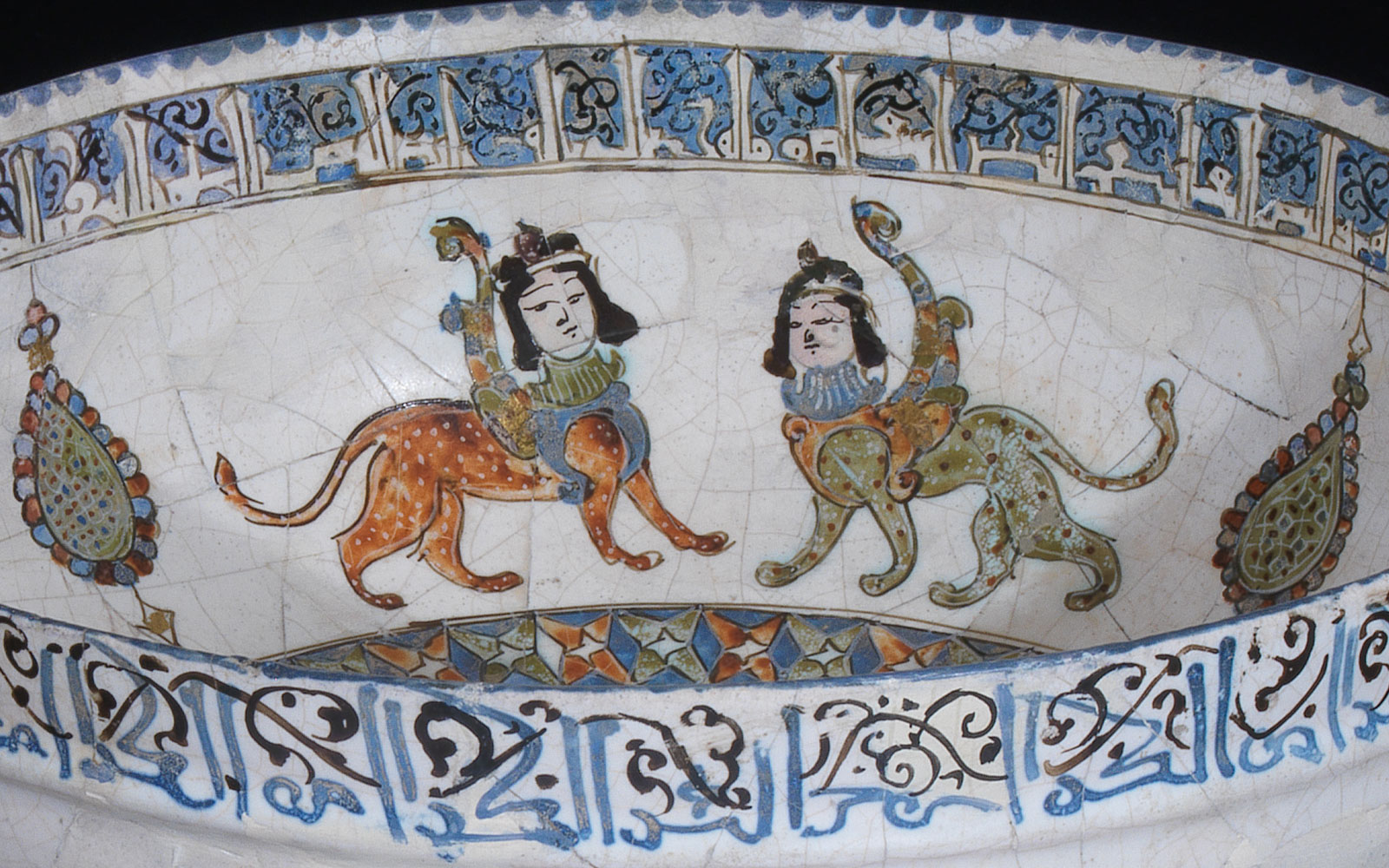Footed bowl

This minai bowl was made in Kashan in the late 12th or early 13th century, during the Seljuk period. It was manufactured from very fine minai ware, an exquisite kind of porcelain that was mainly produced in two Persian cities, Kashan and Ray, during this period.
The piece is 8 cm high with a diameter of 20 cm and was acquired for the original collection of Calouste Sarkis Gulbenkian in Paris on 23 June 1914.

The techniques used in its manufacture include underglaze and overglaze decoration and haft-rang, or seven colours, making this kind of minai (enamelled) ware a luxury item, the crowning glory of a very rich artistic production and a very wealthy Persian court and elite. The piece was initially fired at a high temperature (around 600 degrees Celsius) for the pale blue, purple and green pigments under the glaze, while the black, brown, red and white and the gold leaf were subsequently applied and fired at lower temperatures to prevent colours from running or mixing at different melting points.
The centre of this ivory-white footed bowl depicts a court scene where a young and sumptuously dressed prince can be seen sitting on a high-backed throne. Two falcons are perched on the throne and the prince is flanked by two courtiers, with two confronting peacocks – symbols of royalty, but also the birds of Paradise – at his feet. The confronted position of the birds – both the peacocks and the falcons – seems to have some sort of heraldic quality of representation of power, but the falcons also add a playful note to this courtly scene (also present in another of our minai bowls, Inv. 935): the taste for the art of falconry amongst the Persian elites.

The inner rim of the bowl bears a votive inscription in Kufic script, whilst the outer rim has a pseudo-Kufic inscription amongst arabesques, a common ornamental feature in Islamic art. Like other pieces in this miniature style, this was inspired by Seljuk book illustrations or miniatures, where the frequent court scenes range from the narrative (mainly from the Shahnama) to the purely decorative.
The inner decoration also includes four pairs of sphinxes depicted below the inner rim, mythological creatures of eastern origin that can be found in Egypt, Mesopotamia, Persia and Greece and later – through eastern and Greek influence – in Roman art.
Jorge Rodrigues
Curator at the Calouste Gulbenkian Museum